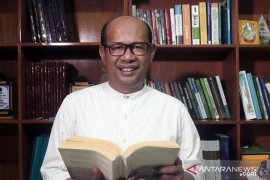PDIP gained 19.45 percent of votes tallied by LSI from a number of polling stations, while Golkar came second with 15.32 percent and the Greater Indonesia Movement (Gerindra) Party finished third with 11.76 percent. The votes represented 48.75 percenJakarta (ANTARA News) - The Indonesian Democratic Party of Struggle (PDIP) led the preliminary result of a quick vote count by the Jakarta-based pollster, the Indonesian Survey Circle (LSI), in the parliamentary election on Wednesday.
PDIP gained 19.45 percent of votes tallied by LSI from a number of polling stations. The votes represented 48.75 percent of votes received by the pollster.
The Golkar Party came second with 15.32 percent and the Greater Indonesia Movement (Gerindra) Party finished third with 11.76 percent.
In the fourth place was the Democrat Party with 10.12 percent.
LSI executive director Denny JA said the result of the counting of the ballot papers continued to move dynamically. However, the movement of highly-rated parties vote tallies could be monitored.
The result of a quick vote count by LSI can also be watched on one of the national private television stations.
Previously, LSI had published the predicted map of support for political parties collated in LSIs Four Predictions before the April 9, 2014, election.
At that time, Denny JA predicted two political parties would not pass the parliamentary threshold as their electability was lower than 3.5 percent. The electability was indicated by the result of a survey conducted by LSI from March 22 to 26. The two parties were the Crescent and Star Party (PBB) and the Indonesian Justice and Unity Party (PKPI).
He said the 2014 election was expected to produce six lower-class political parties, with electability ranging from 3.5 to eight percent. The six parties are the Nations Awakening Party (PKB), the Prosperous Justice Party (PKS), the Peoples Conscience Party (Hanura), the National Democrat Party (Nasdem), the United Development Party (PPP) and the National Mandate Party (PAN).
The Greater Indonesia Movement (Gerindra) Party and the Democrat Party will be in the middle class, with electability ranging from eight to 16 percent.
He said the 2014 election will only produce two upper-class parties with electability exceeding 16 percent. The two parties are the PDIP and the Golkar Party.(*)
Editor: Heru Purwanto
Copyright © ANTARA 2014











